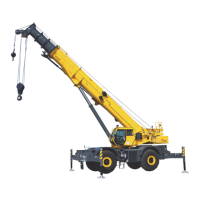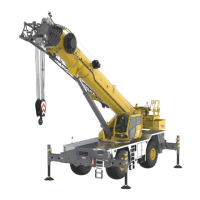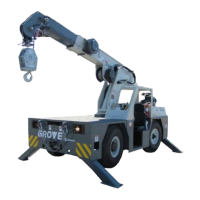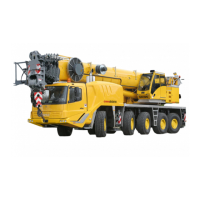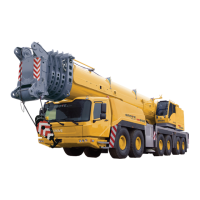5-44 Published 7-23-2020, Control # 668-02
SET-UP AND INSTALLATION GRT9165 OPERATOR MANUAL
Dead-End Rigging/Wedge Sockets
Wedge socket assemblies are popular rigging accessories
used for decades to terminate hoist ropes on mobile cranes.
A wedge socket assembly is easily installed and dismantled,
but must be installed and used correctly. Use only a wedge
and socket of the correct size for the rope fitted. Failure to do
so may result in rope pulling through fitting.
Since state and local laws may vary, alternate attachment
methods may be necessary depending upon work
conditions. If alternate methods are selected, the user is
responsible and should proceed in compliance with the
regulations in force. If there are any questions, contact your
local Grove distributor or Manitowoc Crane Care
Do not mix components from different manufacturers. The
selection, installation, and use of a wedge socket assembly
must be in accordance with requirements of the wedge
socket manufacturer and hoist rope manufacturer upon
whose hoist rope the wedge socket assembly will be used.
Grove specifies size, type, class, and line pulls for hoist rope;
predominately rotation resistant hoist rope, and rigging
accessories such as overhaul balls and hook blocks for use
with each new crane it manufactures.
Other hoist ropes and rigging accessories are available from
various vendors. Different hoist rope manufacturers have
differing requirements for construction, handling, cutting,
seizing, installation, termination, inspection, and
replacement of hoist ropes they produce. Their advice
should be sought for each specific type of hoist rope a crane
user intends to install on a mobile crane.
When assembly is complete, raise boom to a working
position with a load suspended to firmly seat wedge and rope
in socket before crane is used operationally.
When anchoring socket to the boom, make sure flat face of
socket is toward boom sections.
Installing Wedge and Socket
1. Inspect wedge and socket. Remove rough edges and
burrs.
2. Seize hoist rope end using soft or annealed wire or
strand. If end of rope is welded, welded end should be
cut off unless otherwise stated by the rope manufacturer.
This allows distortion of the rope strands, caused by the
bend around the wedge, to adjust themselves at the end
of the line.
3. Make sure live end side (Figure 5-28) of rope is directly
in line with ears of socket and direction of pull to which
the rope will be subjected. If rope is loaded into socket
incorrectly, under a load the rope will bend as it leaves
the socket. The edge of the socket will wear into the rope
causing damage and eventual failure.
4. Insert hoist rope end in socket, form a loop in the rope,
and route rope back through socket allowing the “dead”
end to protrude from the socket. Make sure dead end of
the rope is long enough to apply end treatment after
wedge is seated.
5. Insert wedge in loop. Pull live end of rope until wedge
and rope are snug inside socket. It is recommended
wedge be seated inside socket to properly secure the
hoist rope using the crane’s hoist to first apply a light
load to the live line.
6. After final pin connections are made, increase loads
gradually until wedge is properly seated.
7. Wire rope and wedge must be properly secured inside
socket before placing crane into lifting service. It is the
wedge that secures the hoist rope inside the socket. The
dead-end treatment is used to keep wedge from
becoming dislodged from socket should the rope
suddenly become unloaded from the overhaul ball or
hook block striking the ground, etc.
Figure 5-29 shows methods for securing dead-ends of hoist
ropes in a wedge socket assembly. While the loop-back
method (C, D, E) is acceptable, take care to prevent the loop
becoming entangled with tree branches and other
components during crane transport, or the anti two-block
system and other components during crane operation.
CAUTION
If socket is not positioned with flat face toward boom
sections, structural damage will occur.
Incorrect
Correct
Dead End
Live End
5337
FIGURE 5-28
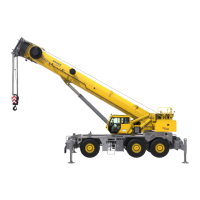
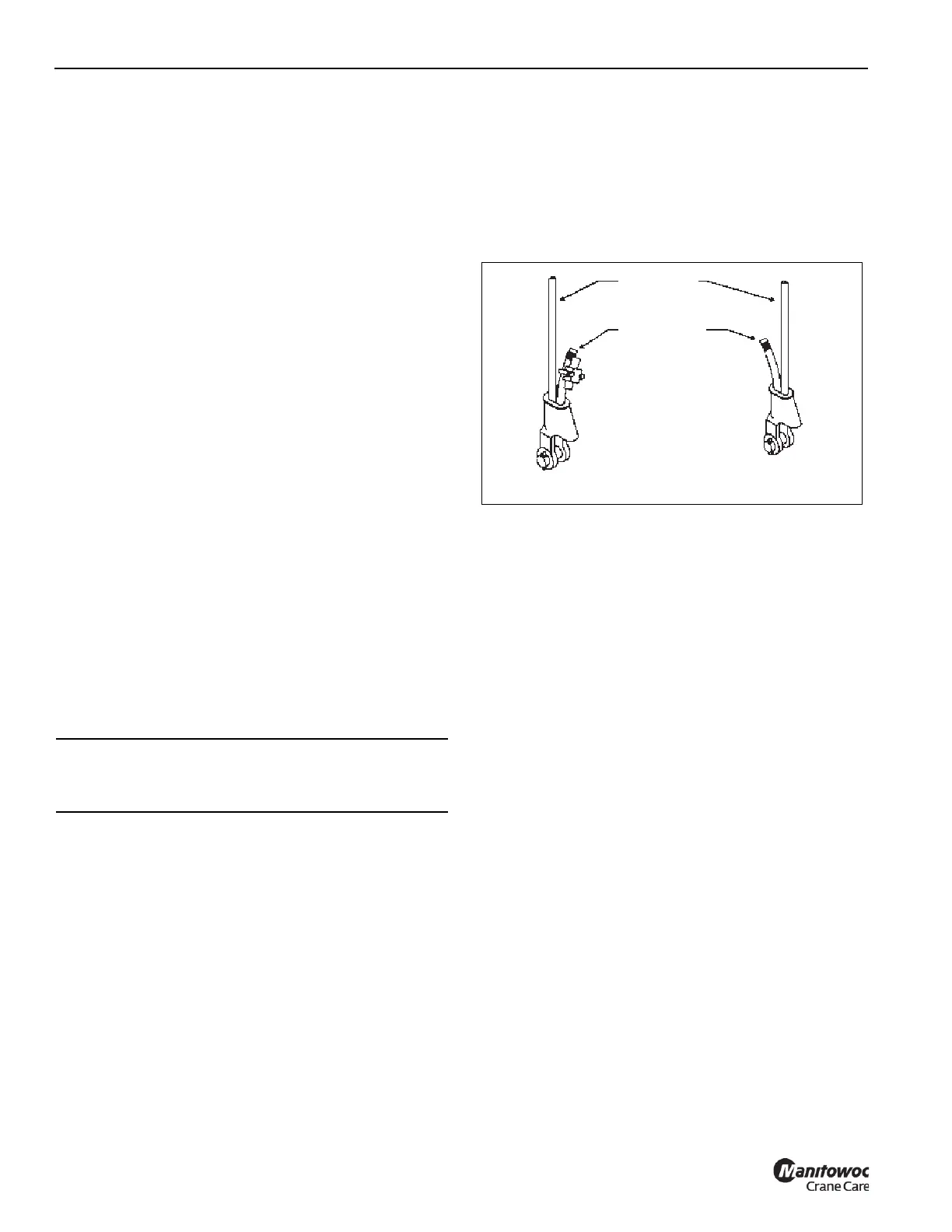